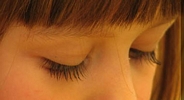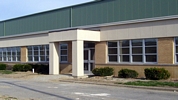Only a short time ago, it seems, liposuction was coming to the forefront of cosmetic procedures. Now, unbelievably, we have the ability to not only remove fat, but to transfer it from one area of the body to another.
The breakdown of natural collagen as we age causes fat and skin to shift into new and unflattering positions on our face. These new fat deposits can create sagging jowls, nasolabial folds (parentheses wrinkles) and a flattened masculine facial structure.
With fat transfer , we are able to remove the fat from these unbecoming deposits and transfer it to areas of the face that are wrinkled, scarred, hollowed or thinned.
Fat transfer can:
· Augment lips
· Eliminate jowls
· Reduce nasolabial folds
· Improve crow’s feet
· Eliminate frown lines
· Fill hollowed cheeks
· Re-contour the face
· Reduce scars (particularly acne scars)
The Fat Transfer Procedure
Before your procedure, you and your surgeon will discuss your options transfer options. You will only need local anesthesia in the area where the fat will be removed and where you will receive the transfer.
First your surgeon will remove the fat from your donor area. The fat is removed in much the same way as is done in traditional liposuction . After small incisions are made around the area of fat to be removed, a cannula (small, hollow tube) is inserted to suction out the fat. When your surgeon is finished removing the fat, he will close the incisions with small sutures.
The fat that has been removed will be purified and then injected into the areas you want to be filled. The entire procedure can take anywhere from thirty to ninety minutes depending upon the extent of corrections.
The results will be evident within a week of your procedure and they can last for up to a year. To maintain your results, you might consider being treated every nine months to a year.
Fat cells can live for about three to four days without a blood supply which is about the same amount of time it takes to start developing capillaries in the injected cells. This means that some of the fat cells will receive a blood supply and others won’t receive it in time. The cells with a blood supply will permanently integrate into your body whereas the cells that don’t have a supply will eventually be reabsorbed into the body.



